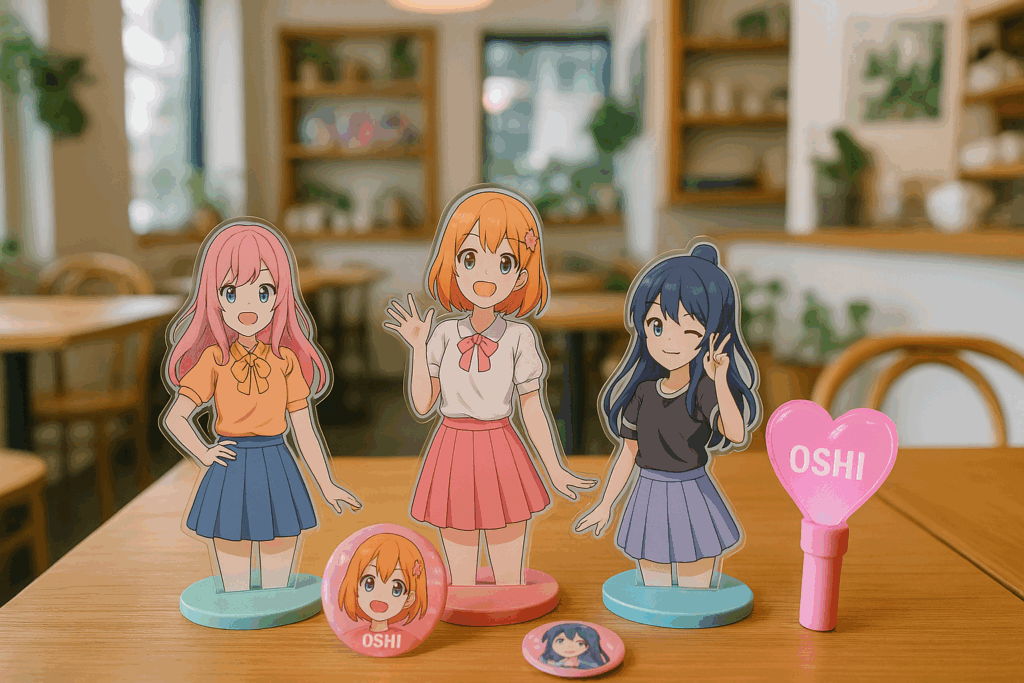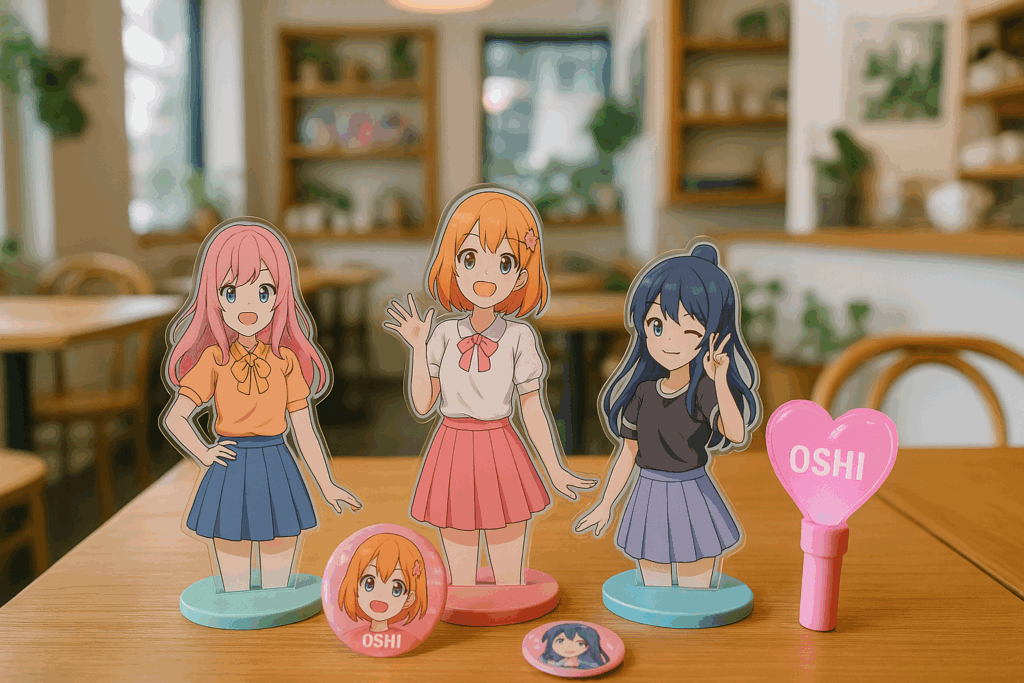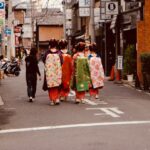Japan’s “Oshikatsu” craze—where superfans dedicate time, money, and creativity to support their favorite pop idols, anime characters, or mascots—has exploded into a ¥3.5 trillion industry. But it’s not just a Tokyo trend: from rural local trains filled with character lovers to small towns reinventing themselves as “fandom tourism” spots, Oshikatsu is changing the face of Japanese pop culture and local economies.
What is “Oshikatsu”?—A Brief Introduction
In Japan, “Oshikatsu” (literally “support activities”) refers to the passionate lifestyle of supporting a personal favorite—known as an “oshi.” While the word originally described fans supporting idols or pop stars, today’s Oshikatsu has grown to include anime characters, sports teams, even local mascots.
Participants—often called “Oshikatsu-joshi” (support girls) but increasingly including all genders—show their devotion in unique ways: collecting merchandise, attending live events, decorating train seats with themed goods, or even planning whole trips around their oshi. Unlike typical “fandom,” Oshikatsu is deeply personal and creative. For many, it’s a daily joy, a source of community, and sometimes even a source of pride in self-expression.

How Big is the Oshikatsu Economy? Surprising Data and Trends
Oshikatsu is no longer a niche hobby—it’s a major economic force. Recent surveys estimate that Japan’s Oshikatsu market reached an incredible ¥3.5 trillion (about $22 billion USD) in 2023, outpacing even the country’s movie and live music industries. This figure includes spending on concert tickets, special events, merchandise, themed cafés, and “collaboration goods” found everywhere from convenience stores to remote train stations.
What’s even more surprising is how much fans are willing to invest. It’s not unusual for “oshi” superfans to spend thousands of dollars a year on travel, goods, and events. Limited-edition items or event tickets can sell out in minutes—sometimes leading to dedicated fans camping overnight for the chance to score a rare collectible.
The boom is also being fueled by social media. Platforms like Twitter (X), Instagram, and TikTok are packed with Oshikatsu communities, where fans share their collections, swap event tips, and organize group pilgrimages to locations tied to their favorite “oshi.” As a result, what once might have been a quiet personal hobby has become a dynamic, highly visible movement across generations.
Unique Oshikatsu Experiences Across Japan
While Tokyo is home to famous Oshikatsu hotspots like Akihabara and Ikebukuro, the true spirit of Oshikatsu can be found all across Japan—often in the most unexpected places. In small towns, rural train lines, and even remote shrines, fans are creating new ways to connect with their “oshi.”
For example, the Chichibu Railway in Saitama Prefecture offers entire train cars decorated for popular anime series, attracting “pilgrims” from all over the country who want to ride alongside life-size character panels. In Okayama, local hot springs towns have partnered with idol groups and mascot creators to offer limited-edition goods and themed accommodations.
Some regions even host “Oshikatsu festivals” where fans gather to show off their collections, cosplay as their favorite characters, and enjoy exclusive pop-up shops. One small city in Niigata transformed its entire shopping street into a “fandom town” with murals, themed cafés, and regular events tied to a beloved manga series.
These local experiences not only boost tourism and sales, but also give fans a reason to travel, explore, and connect with new communities—all while celebrating their passion.

The Rise of “Fandom Tourism” in Rural Japan
As the Oshikatsu phenomenon spreads, rural towns and lesser-known regions are embracing “fandom tourism” as a way to revitalize their communities. Instead of relying solely on traditional sightseeing, these areas create unique experiences tied to popular anime, idols, or mascots that attract devoted fans from across the country—and even the world.
A famous example is the town of Washimiya in Saitama, which became a mecca for anime pilgrims after appearing in the series “Lucky Star.” Each year, thousands of fans visit the local shrine depicted in the anime, bringing a wave of new energy (and spending) to the area. Towns in Shizuoka and Gifu have developed similar success stories, hosting themed events, pop-up shops, and even transforming entire train stations with character art.
Some places collaborate directly with creators to launch “stamp rally” tours, where visitors collect limited-edition stamps at various landmarks, encouraging them to explore deeper into the community. Local businesses—from cafés to taxi companies—join in the fun, often designing special menus, goods, and promotions for visiting fans.
For many rural towns facing depopulation and economic decline, Oshikatsu tourism offers not just financial support, but also a renewed sense of pride and identity—proving that the passion of fans can truly transform a place.
Impact on Local Communities and Young Entrepreneurs
The Oshikatsu boom is doing more than just attracting tourists—it’s inspiring a wave of creativity and new business across Japan, especially among young people. Many local entrepreneurs are leveraging fandom culture to launch original cafés, design goods, or even create travel packages tailored to fans’ unique desires.
For example, in regions like Tottori and Toyama, young locals have opened specialty shops selling handmade “oshi” goods or offering custom tours based on anime and idol locations. These businesses often collaborate with local governments and artists to develop unique experiences that reflect both regional charm and fandom spirit.
Local communities are also seeing benefits beyond the economic. Oshikatsu events encourage intergenerational participation, with families and elders joining in themed festivals or welcoming fans from afar. In many towns, the positive, welcoming energy of Oshikatsu tourism has created new bonds between residents and visitors, helping to counter depopulation and revitalize community spaces.
Perhaps most importantly, Oshikatsu gives a platform for young voices and fresh ideas—demonstrating that even the most rural town can become a vibrant destination when it celebrates creativity and connection.
How to Join the Oshikatsu Movement
Curious about joining Japan’s Oshikatsu movement? Good news: you don’t have to be a die-hard anime or idol fan to dive in! Here are some tips for foreign visitors who want to experience the world of Oshikatsu firsthand:
- Visit Local Themed Spots: Don’t just stick to Akihabara—look for small-town events, character-themed trains, or local pop-up cafés. Tourist information centers often have details on nearby “Oshikatsu” experiences.
- Collect Limited-Edition Goods: From train station shops to convenience stores, you’ll find exclusive items tied to seasonal events or collaborations. Grab a few as unique souvenirs!
- Join a Fandom Event: Check social media or city event calendars for “Oshikatsu” festivals, stamp rallies, or special exhibitions during your visit.
- Respect the Community: Many Oshikatsu locations are real neighborhoods and working shrines—be mindful of local customs and ask before taking photos.
- Share Your Experience: Fans love connecting online! Share your finds and stories with hashtags like #推し活 (#Oshikatsu) on Instagram or X (Twitter) to join the community, even from abroad.
Oshikatsu is all about celebrating what you love and building connections with others. Whether you’re a lifelong fan or just curious, your adventure into Japan’s fandom culture can lead to unexpected friendships and memories.



